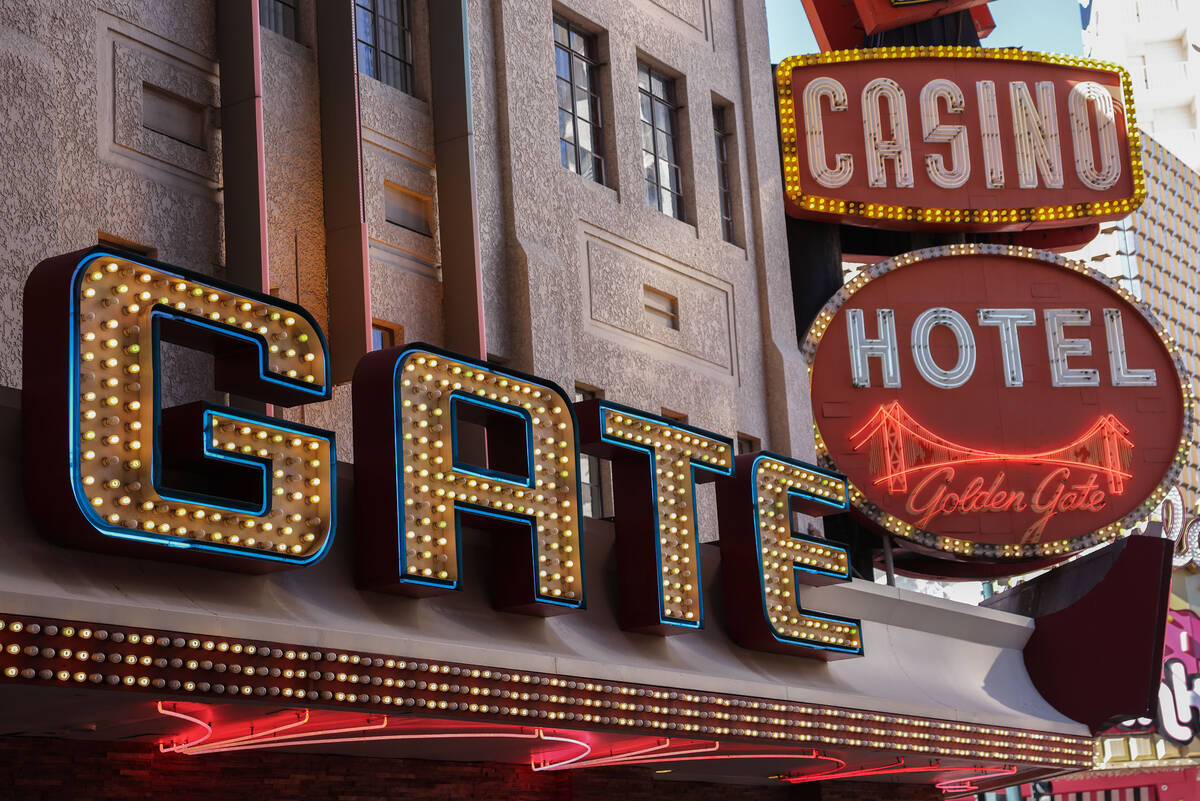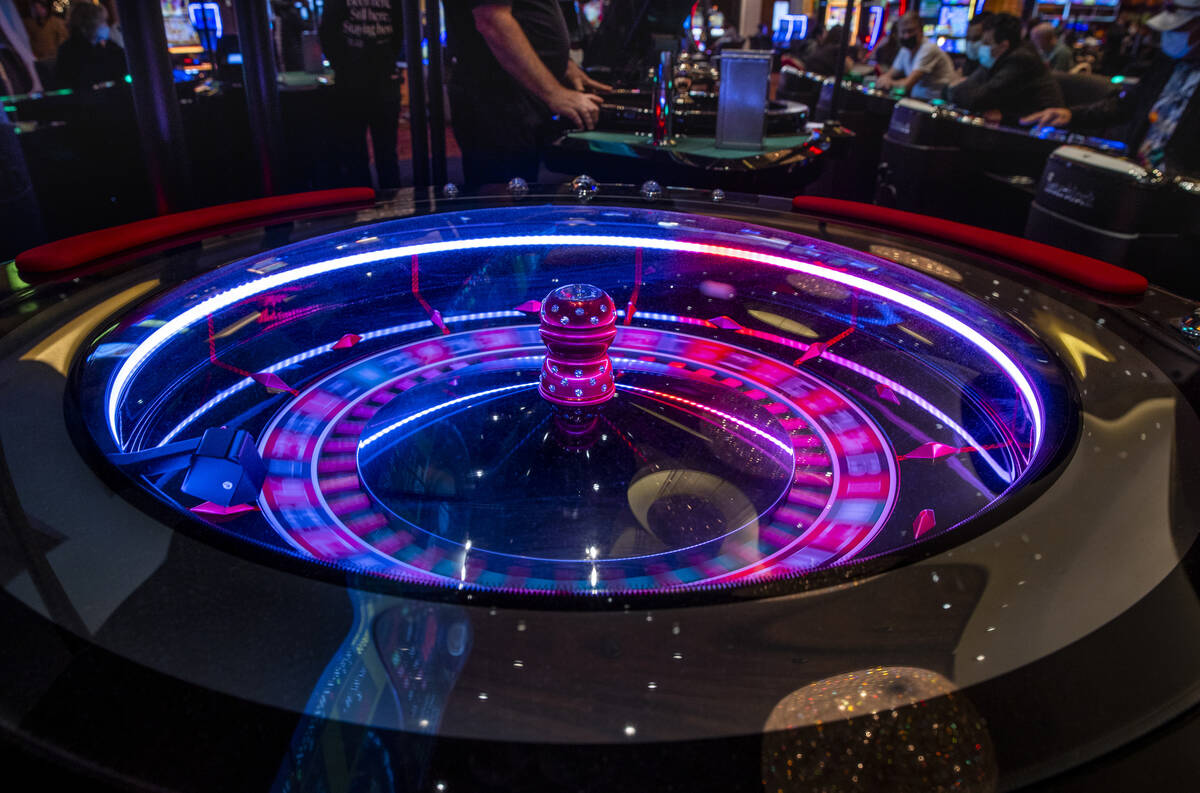When John F. Miller built a hotel in Las Vegas, a local newspaper reported that he spared no expense.
The rooms were large, well lighted and ventilated, and electric lights and a telephone system were being installed.
All in all, the hotel would be “a credit to Las Vegas and as comfortable a hostelry as can be found anywhere,” declared the Las Vegas Age in 1906.
Nearly 120 years later, after a history of name changes, expansions and other new features, the former Hotel Nevada still stands—an amazing feat in Las Vegas, where many hotels, primarily on the Strip, have imploded over the years to make way for bigger, flashier casino resorts.
And as a recent real estate deal shows, the historic downtown hotel long known as the Golden Gate was still connected to the original developer, who built the project in the early days of Las Vegas as a small desert outpost.
Golden Gate owner Derek Stevens confirmed to the Las Vegas Review-Journal that he acquired the land under the hotel-casino, at the corner of Fremont and Main streets, from descendants of Miller.
Stevens had been leasing the land from family, and property records show his $19 million purchase of the 1.3-acre parcel closed last month.
The family sold the lot to Stevens through an entity formed in 1908 as the Hotel Nevada Mining Company, a company formed when Las Vegas was still part of Lincoln County.


Miller started the company to invest in hotels, mining claims, oil wells, real estate and liquor stores, according to its incorporation papers.
The entity is now called Sal Sagev Hotel Co. Inc., because the hotel’s name was changed in the early 1930s to Las Vegas spelled backwards.
Sal Sagev Hotel Co. President James Reynolds — who, according to Stevens, is Miller’s great-grandson — could not be reached for comment on the sale.
UNLV history professor Michael Green said he liked the notion that Miller’s descendants still owned the land beneath the hotel, noting that historians live for links from the past to the present that people don’t expect.
“That would be one of them,” he said.
Telephone number: 1
Stevens, a visible downtown casino boss who also owns D Las Vegas and Circa, said he always wanted to buy the Golden Gate land from the original owners.
He has made many changes to the compact property at 1 Fremont St., on the western edge of the rooftop Fremont Street Experience. He also promotes its place in Las Vegas history.


As described on the Golden Gate website, Las Vegas’ first telephone was installed at the hotel in 1907; The hotel installed an outdoor electric sign in 1927, a precursor to Las Vegas’ famous neon lights; and the hotel introduced Las Vegas’ original shrimp cocktail in 1959.
Display cases near the check-in desk also serve as an internal museum.
Visitors can see towels, a room key and telephone directory from Sal Sagev in the 1930s; chip racks and liquor bottles from the 50s; casino uniforms from the 60s; and wooden pipes that held the original line for Las Vegas’ first telephone.


There’s also a display that notes the hotel’s original phone number: “1.”
Miller, who died in 1957, is said to have arrived in Las Vegas on the first train here. He bought the lot for the Hotel Nevada at the 1905 land auction that started Las Vegas, paying $1,750, according to Green.
He first opened a tent hotel but then built an actual hotel building, Green said.
On January 6, 1906, the Age reported that Miller was building a “first-class” property. Miller also issued a warning in the same issue, printed right nearby, telling readers to post the notice “where you’ll be sure to remember it.”
“No one has any authority to receive goods or anything charged to me, and I hereby warn everyone that I will refuse to pay any debts unless I have contracted myself,” he wrote.
Las Vegas, Lincoln County
A week later, the Age reported that the hotel had “quite a number of guests” even though the interior was only partially finished.
In the summer of 1910, The Age reported that Miller had resigned as manager of the hotel and was taking a much-needed rest in southern California for a month or two.


The newspaper also noted that the “Hotel Nevada Mining Company” had taken over the property about two years earlier and had since maintained Miller’s various businesses.
State records show that Miller formed the company in late 1908 and declared its headquarters to be at the Hotel Nevada in Las Vegas, Lincoln County.
Clark County came into being in 1909, after the Nevada Legislature carved it out of Lincoln County.
In 1910, the Las Vegas “district” of Clark County had a population of 945, according to a US Census Bureau report.
“Chief Loser”
In 1931 Hotel Nevada’s name was changed to Sal Sagev. It got off to a rough start under the new brand.
On November 12, 1931, The Age reported that nearly 24 hours of incessant rain had caused extensive damage to property in and around Las Vegas.


“The city’s chief loser was Sal Sagev,” The Age wrote, adding that the hotel was in the process of being rebuilt and “practically roofless over the whole building.”
Almost two decades later, the hotel made headlines for a different reason.
On September 22, 1949, the Review-Journal reported that a clerk at Sal Sagev discovered a mysterious note indicating that Los Angeles mobster Mickey Cohen’s missing henchman Frank Niccoli had been “rubbed out.”
The clerk informed the police about the note.


In 1955, investors from the San Francisco Bay Area opened the Golden Gate Casino on the ground floor of Sal Sagev. Eventually the entire property became known as the Golden Gate.
New resort nearby
In 2008, Stevens and his brother, Greg, received approval from Nevada casino regulators to acquire a 50 percent stake in the hotel-casino. They took full ownership in 2015.
The Golden Gate has undergone several changes over the years.
Its ownership group added a five-story hotel building in 2012, saying this marked the property’s first major expansion in 50 years. Stevens unveiled more upgrades in 2017, including a larger casino floor, a longer outdoor bar along the Fremont Street Experience, and a Jazz Age-inspired entrance with 500-pound golden velvet drapes.


Stevens has also carried out demolition work nearby.
He and his brother acquired the partially shuttered Las Vegas Club hotel-casino property in 2015. Then in 2016, they bought adjacent land with two small casinos — Mermaids and La Bayou — and a strip club called Topless Girls of Glitter Gulch, saying the deal would allow them to redevelop the block with a new hotel-casino property.


They leveled the buildings and developed Circa, which opened in fall 2020.
The 35-story, 777-room resort is known for its pool area with a capacity of 4,000 people year-round and three-story sports book with a 78-million-pixel screen and seating for 1,000 people.
It was downtown’s first newly built resort in four decades — and it’s only about 80 feet from the oldest hotel in Las Vegas.
Contact Eli Segall at esegall@ theplayerlounge.com or 702-383-0342.





